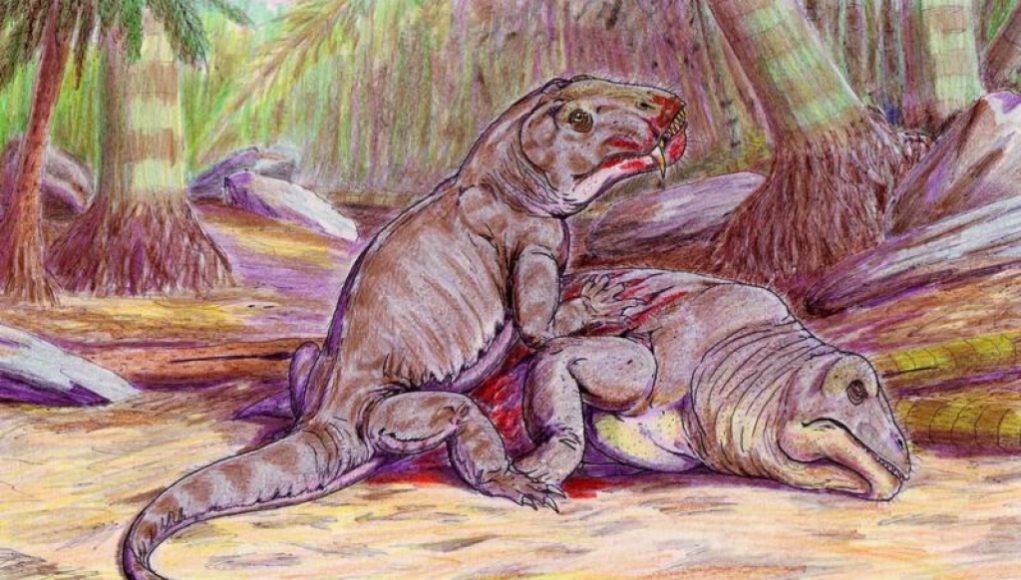The Capitanian mass extinction was once lumped in with the “Great Dying” of the end-Permian mass extinction, but the lesser-known extinction occurred 8–10 million years earlier. However, don’t let its lack of fame fool you – it was quite lethal. According to one estimate, as many as 62 percent of species went extinct. Two new papers by different teams shed new light on the event, revealing a pattern of cause and effect that’s seen in other mass extinctions: huge volcanic eruptions, global warming, the collapse of the terrestrial ecosystem, and the spread of oxygen-starved ocean dead zones.
Ocean dead zones
Huyue Song of China University of Geosciences and colleagues from China, the US, and the UK studied mid-Permian-age rocks at a site called Penglaitan, about 300 miles west of Hong Kong. They found that there were two distinct pulses of Capitanian extinction, one about 262 million years ago and another around 260 million years ago. Those are both well before the more famous “Great Dying” end-Permian extinction, which occurred 252 million years ago, and Song’s team set out to uncover what happened.
“In a way, the extinction losses have been hiding in the shadow of the end-Permian extinction,” said Paul Wignall, a professor at the University of Leeds and a co-author on Song’s paper. “It wiped out a lot of genera of all the usual things in the sea,” adding, “a bunch of animals died on land,” as well.
Advertisement
Previous studies have found evidence of Capitanian extinctions in places as far afield as Ellesmere Island and Spitsbergen in the Arctic, China, Iran, Texas, New Mexico, North Dakota, South Africa, and Antarctica. The extinctions hit corals, mollusks, forams, and calcareous algae in the seas, as well as land plants and animals such as the dinocephalians (meaning “terrible heads”), a group of large reptiles related to the ancestors of mammals.
In the time leading up to the extinctions, the Penglaitan area was like the Bahamas, Wignall told Ars, with a warm shallow sea and reefs. But then the environment soured.
To find out why, they analyzed uranium isotopes, along with carbon and oxygen isotopes, in rocks from Penglaitan. When seawater has limited oxygen, microbes in the seabed obtain electrons for their metabolism from other elements, including uranium. Since the microbes prefer uranium-238 over uranium-235, they alter the balance of uranium isotopes between the seabed and seawater. When this imbalance is found preserved in rocks, it tells us that there were oxygen-starved dead zones in the global oceans at that time.
Song and colleagues used this approach to discover that each Capitanian marine extinction pulse coincided with widespread oxygen starvation in the ocean, called anoxia. “Oxygen levels were getting weaker, which is to the detriment of animals,” said Wignall.
Professor Bas van de Schootbrugge of Utrecht University, who was not involved in the study, agrees with the anoxia explanation but questions the extinctions: “This data seems robust. As for the presumed mass extinction, especially the global nature of it, I am less convinced,” he told Ars.
Song and colleagues accept that judgment, writing: “The timing and number of episodes of the Capitanian biocrisis remain controversial.”
Carbon isotopes in the same rocks showed that the anoxia was coincident with large shifts in the carbon cycle, and oxygen isotopes revealed there was global warming at each of the two extinction pulses.
The question is, what caused this environmental upheaval?
As mankind continues to observe and collect evidence of the devastating effects of climate change, researchers are now looking into the distant past to determine how dramatic environmental shifts and climate change may have influenced other species long ago.
A new study has found evidence that suggests a rapid mass extinction event 260 million years ago may have been caused by climate change. It is believed to be the Earth’s largest mass extinction event: ending the dominance of the Permian era and heralding the Triassic.
Researchers suggest that changing temperatures reduced the ability for carbon dioxide to cycle between land and sea, leading to a catastrophic rise in temperatures before the onset of the mass extinction event.
From this study, we have more evidence that climate change can have a catastrophic effect on the Earth’s biosphere. The researchers warn that climate change – in addition to its current effects – may also have dramatic and far-reaching effects beyond our current time as ecosystems are pushed beyond their limits and extreme climate events occur more frequently.
These results are a reminder that human activities can have profound effects not only on our current environment, but also on the world millions of years in the future. We should take every precaution to reduce the risk of large-scale climate change and realize the full potential of life on Earth.




















